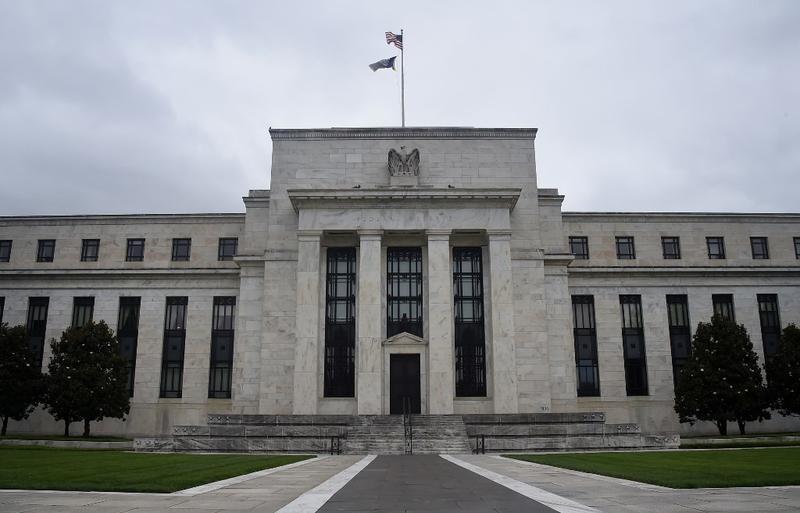 The Federal Reserve building is seen on June 17, 2020 in Washington, DC. (OLIVIER DOULIERY / AFP)
The Federal Reserve building is seen on June 17, 2020 in Washington, DC. (OLIVIER DOULIERY / AFP)
The coronavirus pandemic has roiled the US economy, sending some major retailers into bankruptcy, cutting demand for air travel by as much as 90 percent, slashing oil prices to historic lows and forcing the Federal Reserve to pump about US$2.3 trillion into the economy to keep credit markets functioning.
What's happened is, with the partial closure of the economy, the flow of coins through the economy has kind of stopped
Jerome Powell, Federal Reserve Chairman
And now, an unintended consequence of shutting down the economy: a coin shortage.
"What's happened is, with the partial closure of the economy, the flow of coins through the economy has kind of stopped," Federal Reserve Chairman Jerome Powell said last week in testimony before the House Financial Services Committee.
"The places where you'd go to give your coins and get credit-those have not been working. So, a whole system has kind of come to a stop. We're well aware of this. We're working with the (US) Mint and we're working with the (regional Federal) reserve banks. And as the economy reopens, we're seeing coins begin to move around again."
According to US government figures, there are about 3.82 billion coins in circulation. That includes about 2.2 billion pennies, 379 million nickels, 737 million dimes, 504 million quarters, 3.4 million half dollars and 2.9 million dollar coins. Currency in circulation this month, including paper bills, totaled just under US$2 trillion.
ALSO READ: Shares rise on economic recovery hopes, bonds dip
Cash businesses such as restaurants and convenience stores typically deposit receipts at local banks each day. That activity combined with the regular flow of new coins from the US Mint keeps the nation's banks supplied with needed pennies, nickels, dimes and quarters. In turn, banks recirculate the coins to customers as needed.
But with states closing businesses to curb the spread of the coronavirus, the usual cycle of deposits from cash businesses slowed. As a result, the supply of coins was not routinely refreshed, and spot shortages arose.
At last week's hearing, Congressman John Rose, a Republican from Tennessee, said the Federal Reserve had told banks in his district that each would receive just a small portion of its weekly coin order.
That raised the possibility of disruption and might force some businesses to round cash transactions up or down if needed coins were not available, he said.
"In a time when pennies are the difference between profitability and loss, it seems like it might be a bigger concern than the announcement from the Fed would indicate," Rose said.
Historical use
In response, the Fed said it would temporarily allocate coins to banks "based on historical order volume by coin denomination".
That would appear to solve the problem, unless there is a sudden rise in demand for coins above historical use or a spot plunge in the number of coins available.
Production of new coins by the US Mint has been disrupted by the coronavirus pandemic as workers stayed home to curb virus' spread.
The Fed urged banks to help replenish inventories "by removing barriers to consumer deposits of loose and rolled coins".
That probably means counting the coins by hand-and that may be difficult, especially if customers bring in large amounts of loose change.
In 2017, TD Bank agreed to pay nearly US$9 million to settle a class-action lawsuit on behalf of customers who used any of its 1,200 Penny Arcade automatic coin-counting machines.
The devices were not 100 percent accurate and sometimes undercounted the value of coins tossed in the hopper. To avoid future legal action, the bank removed the devices from its branches. Some competing banks took similar action, or required customers to sign a waiver before coins were counted by machine.
Under terms of the settlement, TB Bank said it would review its records and agreed to multiply the sum of coins counted by the machines by 0.26 percent to determine a customer's share of the settlement.
READ MORE: Relevance of circular economy has grown
That means eligible customers would receive 26 cents for each US$100 counted by the bank's Penny Arcade machines.
The current coin shortage is not the first.
On Sept 1, 1999, the Federal Reserve warned of a penny shortage as demand increased in some areas of the country.
The problem created no major disruption in commerce and faded away-just as the current shortage is likely to do.
Asked if the coin shortage is indicative of a larger issue, Powell assured members of the House Financial Services Committee that "it's just temporary".


